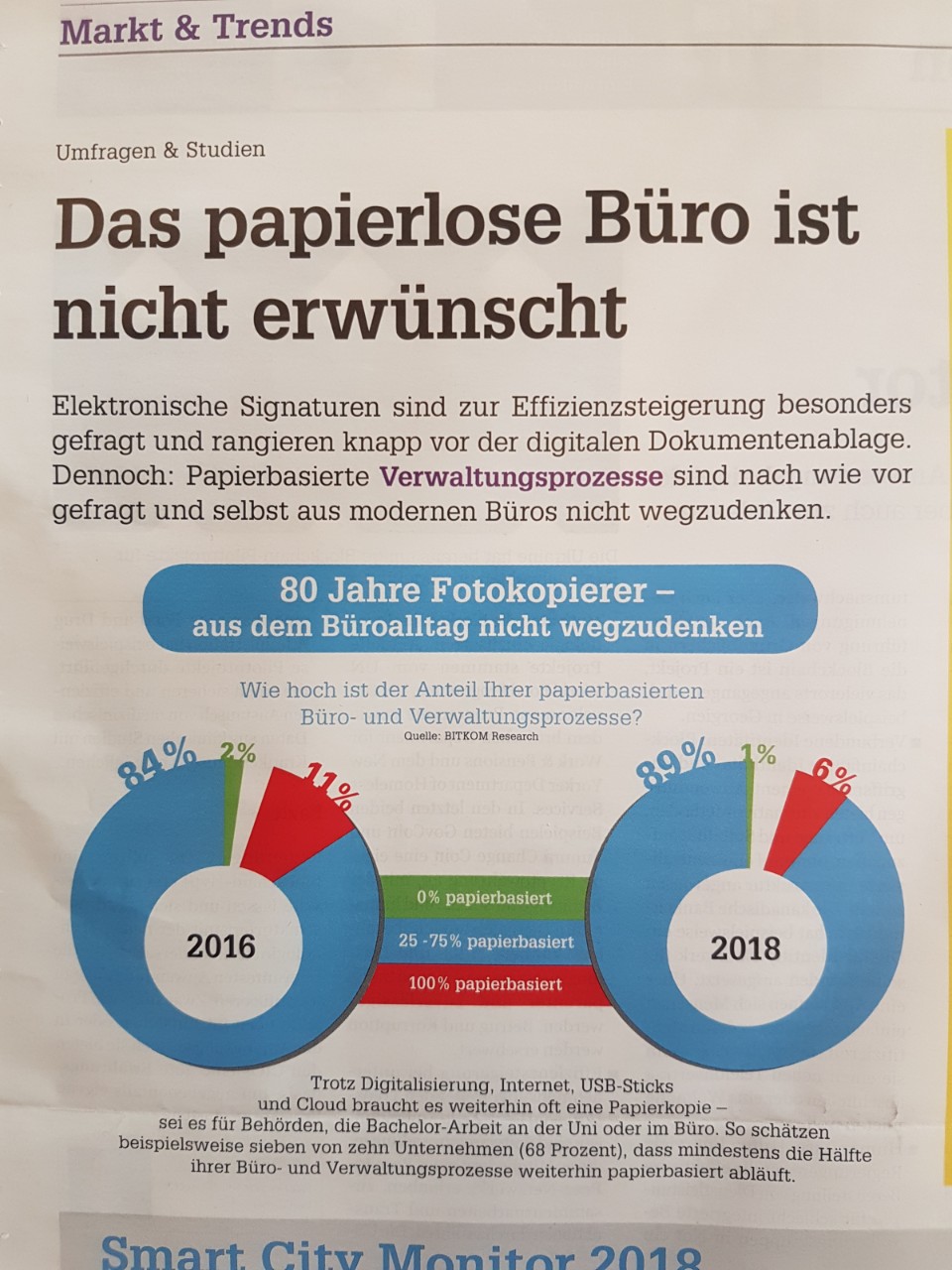Due to the segmentation (0% paper-based, 25 - 75% paper-based, 100% paper-based), one can perhaps have a sceptical view on the statistical value of this BITKOM survey.
Nevertheless, I find the statement that in 2018 six times more companies will be working exclusively with paper-based processes than exclusively with digital processes frightening.
What is the reason for this? Do we as corporate or government employees really prefer paper, copiers, in-house mail and analog, non-transparent processes? Or is it more to do with the fact that companies are still largely not unleashing the potential of digital platforms, workflow engines, digital form processes, mobile and digital signatures? Either because they lack the possibilities or because they do not yet know how to use the existing systems properly?
Do we really love the copier?
What I lack in such statistics are the open questions about "why". So "Why are you still working paper-based today"?
There will certainly be no answer to this question like "because we love the copier" or "in-house mail is a great workflow tool". Rather, respondents will name "digitization hurdles," such as required signatures within an approval process, complex processes, or simply the habit.
The fact is that Germany lags years behind many other European countries in the area of eGovernment and digital government processes. It is also a fact that, on the other hand, economic growth can only be achieved through progress. Progress and further development do not only refer to new products or services, but also to the continuous improvement of internal processes. Forms are an important component for internal processes, because they are usually the beginning of them.
Modern processes
Digital forms management platforms such as AEM Forms include a customizable portal to centrally manage and store all forms. With this portal, organizations can easily manage hundreds or thousands of forms, update them and make them available to employees in a single place.
Users can use a full-text search with autofill function in the form portal to search for a form. In the customizable portal they can mark their most important forms/transactions as favorites so that they are displayed in a personalized list in the form portal. This significantly reduces the time spent searching for frequently used forms. From the forms portal, the forms can be filled out directly with any device and the workflow can be triggered automatically. The employee does not need to know the process, only the form. This makes our life as an applicant easier, because "people think in forms - not in processes".
Dynamic functions can be used in the forms and processes, e.g. when exceeding approval guidelines. The digital process knows the structure and organization of the company and forwards approval applications to the right place. Depending on the application, additional approval levels or signature fields can be automatically added and form components can be shown or hidden depending on their relevance. After a process has been completed, all relevant documents and proofs are automatically and audit-proof transferred to the archive system, so that all auditing and documentation obligations of the company or authority are fulfilled.
Summary
All this is already possible today without any problems. I am sure that employees prefer to participate in administrative processes digitally, on the desktop PC or mobile, rather than print out forms, sign them, scan them or hand them over to the house popster. The innovation cycles in many companies are now very short and the innovations inspire their customers. However, there is still a lot to be done to offer employees in companies or public authorities a more modern working environment.



